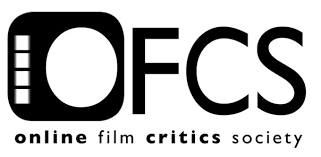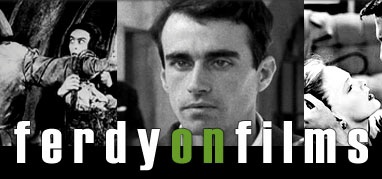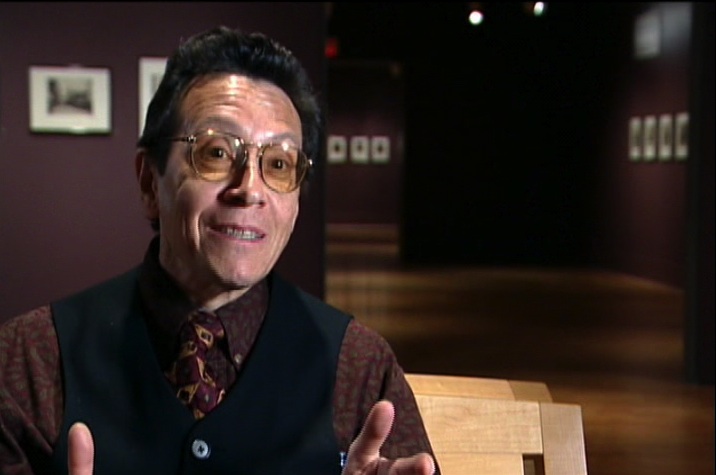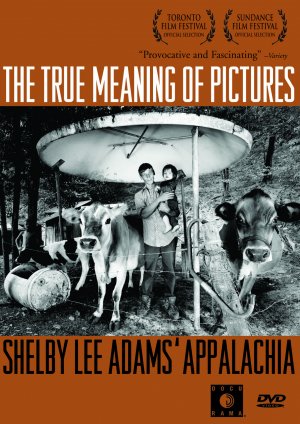 At the end of my last post, I mentioned an exchange with one Marilyn Ferdinand regarding her fabrication of a quote from me and her distortion of my comments about the work of Shelby Lee Adams in her review of Jennifer Baichwal’s film, The True Meaning of Pictures: Shelby Lee Adams’ Appalachia. I only came across her 2009 review of Baichwal’s 2002 documentary in January 2014, but thought I’d call her on her excesses, even if belatedly, by adding a corrective comment to the ensuing discussion.
At the end of my last post, I mentioned an exchange with one Marilyn Ferdinand regarding her fabrication of a quote from me and her distortion of my comments about the work of Shelby Lee Adams in her review of Jennifer Baichwal’s film, The True Meaning of Pictures: Shelby Lee Adams’ Appalachia. I only came across her 2009 review of Baichwal’s 2002 documentary in January 2014, but thought I’d call her on her excesses, even if belatedly, by adding a corrective comment to the ensuing discussion.
Below you’ll find the entirety of the ensuing dialogue. Click here for the review that prompted it, at her blog, Ferdy on Films. (Because she partners at the blog with another reviewer, I assumed she shared editorial responsibility with him. Hence my use of the plural in the third paragraph, for which I apologize to her co-author.)
•
Just came across this review, with the following passage attributing a quote to me:
“That Adams may be critiquing the consumers of this photo seems to escape sophisticated readers such as critic A. D. Coleman, who says, ‘I’m sorry, but these people aren’t sophisticated enough to know when they’re being exploited.'”
In actual fact, I don’t say that anywhere in the film. In my experience, making up quotes and putting them in people’s mouths isn’t a one-off; it’s a habit. Your readers should approach your work in that light.
This specious instance of your professional irresponsibility has been picked up and circulated elsewhere online. You’ve disgraced yourselves as cultural journalists and critics. Shame on you both.
(Posted by me at her blog, January 25, 2014)
•
Ferdinand sent me the following email the next day:
January 26, 2014
Dear Mr. Coleman,
I was disturbed by your comment about the inaccuracy of the quote I attributed to you, and went back to the film to see what you said. You are completely correct that I did not quote you verbatim, though my punctuation made it seem as though I had. I have taken down, word for word, what you said in the film and replaced the incorrect quote with the correct one, acknowledging that this was a correction.
I do apologize, though I am not pleased you dragged my blog partner into this. We write independently, and he is not responsible for fact-checking me. He is an excellent critic, and I would not like you to have a bad impression of him.
As to my own disgrace, I admit that I am human. I do grasp the distinction between what you said and what I heard, but only on reflection. And that is the real issue, one that goes back to the film itself -not that the subjects are not visually sophisticated or unsophisticated, but that they have no more experience of the hearts and minds of viewers in a NYC gallery than the gallery goers have of life in a holler. To the holler dwellers, there is nothing sinister about the pictures because these are people they know, love, and understand from a way of life they themselves live. There is no way anyone can become “sophisticated” about culture clash unless they can step outside themselves and understand the world outside their ken.
Please again, accept my apology.
Best regards,
Marilyn Ferdinand
•
I’ve no idea what she means by “I do grasp the distinction between what you said and what I heard [and published, with quote marks around it], but only on reflection.” In the adult world where, since 1967, I’ve done my professional work as a scholar, critic and cultural journalist — a universe separate from yet parallel to that inhabited by bloggers like Ferdinand, and connected by unpredictable wormholes — you don’t get to publish a fabricated quote at your blog and then, when caught at it and called on it, apologize privately in an email. Concocting a fake quote constitutes a punishable offense; in my sphere, people lose their jobs over such unethical behavior.
I don’t accept private apologies for public offenses. At the very least, when you display such unprofessionalism, you make your apology — to the person in whose mouth you put your own words, and to your readers — in the same public space in which you committed the offense. Then you’re playing by grown-up rules.
Ferdinand also changed the fictitious quote to an actual one, from a later segment of the film — which apparently didn’t require her to revise her argument one whit. So I posted another comment at her blog.
•
I’ve received your emailed apology. Thank you for correcting the quotation you falsely attributed to me in the original version of your post.
Per your email, putting quotation marks around words does indeed “ma[ke] it seem as though” you are “quot[ing someone] verbatim.” Indeed, it doesn’t just “make it seem” that way; from both a journalistic and a legal standpoint, that’s exactly what it indicates, and how it’s commonly understood. I’m surprised that this understanding had escaped you until now, though I’m pleased to have brought you to it, even if belatedly.
Having no idea how you and your partner in this project divide up the editorial chores, I assumed you shared them equally, and took equal responsibility for the site’s excesses. My apologies for implicating him in your misdeeds. With that said, when two people jointly publish a blog, the misbehavior of one reflects badly on the other.
However, you haven’t resolved all your problems merely by quoting me accurately.
1. In the sentences just preceding that quote, you discuss a particular Adams photo at length — the hog-slaughtering image. You then precede your now-correct quote of my words by saying, “That Adams may be critiquing the consumers of this photo seems to escape sophisticated readers such as critic A. D. Coleman, who says …” But what follows is not what I actually said in the film about this photo. Slyly, you introduce something I said elsewhere in the film, speaking about Adams’s work in general terms, while implying contextually that I made that comment about that particular image.
Here’s all I say about that hog-slaughtering photo in the film: “On some unconscious level, a lot of people do realize this doesn’t quite look like your average documentary photo — why doesn’t it? It’s not that there isn’t information in there. This family did look that way that day. But they looked that way standing in front of Shelby Lee Adams’s large-format camera with Shelby Lee Adams’s light on them. And that has changed everything, even if we don’t know that he bought the pig, and arranged the butchering, and all that stuff.” From that brief snippet (extracted from several hours of footage Baichwal shot of me), how could you possibly know what does or doesn’t “escape me” about this specific image?
2. Nowhere do you explain how this photograph (or any photograph) can “critique” its viewers. Please elucidate.
3. How do you conclude that you’ve “contradicted [me] so easily” when you haven’t contradicted me in any way whatsoever?
You’ve had two chances now to put the actual words I spoke on the filmic record about that photo into your review. The first time you simply made something up to suit your fancy, and put your words in my mouth. The second time, instead of using what I actually said about that photo, you substituted something else I said on a broader subject.
As someone who’s published professionally as a critic since 1967, and clearly has a more finely honed sense of the ethics of criticism than you do, I repeat: Shame on you. You’re a disgrace to the profession.
(Posted by me at her blog, January 26, 2014)
•
As I don’t subscribe to or follow her blog, I didn’t discover her response to my second (and final) comment until I checked in while preparing my previous post on this subject. It’s also dated January 26, 2014:
 Mr. Coleman – I don’t know why you are coming after me with such vehemence. I do think you’re a snob, and your comments about the lack of visual sophistication of the subjects of this film implies that there is only one reading of these photos, all of these photos. That, to me, says quite a bit about you as a critic, that you feel you have the only sophisticated reading of a photo.
Mr. Coleman – I don’t know why you are coming after me with such vehemence. I do think you’re a snob, and your comments about the lack of visual sophistication of the subjects of this film implies that there is only one reading of these photos, all of these photos. That, to me, says quite a bit about you as a critic, that you feel you have the only sophisticated reading of a photo.
In fact, you have your own point of view of how the photos will be interpreted, that of someone outside the holler who looks at these images and finds them disturbing. The entire documentary takes a look at what the pictures really mean, and there is no one right answer to this question. You, on the other hand, have decided that the holler dwellers can’t possibly know how to read these pictures. That is cultural bias of the first degree.
I’m not beholden to you to quote you chapter and verse, and there is absolutely nothing wrong with what I have written except that you have chosen to take offense at everything now, even when I acknowledge my error, apologized, and corrected it. Shame on you for your ungenerous attitude and snobbery.
•
All bluster, obfuscation, evasion, ad hominem argument, and general chickenshit.
Late this summer, I decided to initiate a series of posts about Adams’s work, my thoughts on it, and the responses from various sources (Ferdinand among them) to the short excerpts from a two-hour interview with me that appear in Baichwal’s film. To my amusement, via a comment that Ferdinand added in response to the first post in this series, I learned that she had actually gone to the trouble of blocking my access to her site sometime in late January — a ban that she has now, just as arbitrarily, lifted. Too bad. I’d enjoyed my brief moment of getting blackballed.
I can’t imagine blocking anyone from even accessing my site. The main rules I impose on my readers who opt to comment are that they use their full real names and stay (relatively) on-topic. My blogware — like Ferdinand’s, I assume — enables me to filter out spam and delete comments I consider inappropriate; but I don’t consider challenges to my ethics or professionalism to fall into either category. To the contrary, I consider myself obligated to justify my actions (or eat crow publicly) when such charges get made.
Indeed, culturally biased snob that I am, I make it a practice to allow everyone in the world access to my blog; to approve for publication comments that question my positions and my accuracy; and to invite those about whom I’ve had harsh things to say, or who merely wish to make contrary arguments at some length, to produce substantial Guest Posts, so as to broaden the range of opinions presented here.
I note with interest Ferdinand’s membership in the Online Film Critics Society, “a professional association for online film journalists, historians and scholars.” Significantly, the OFCS says nothing whatsoever about ethics in its bylaws. In the event, as I stated at the outset of this post, Ferdinand and I operate in parallel universes. I wouldn’t prohibit her from accessing this blog, or posting comments here, but as a critic and cultural journalist she doesn’t meet my professional standards.
The True Picture of Meaning
 Irresponsible, unethical, unprofessional behavior like Ferdinand’s fabrication of a quote has a contagious aspect. Consider this: On April 25, 2011, one Morgan Sorensen put online at Prezi, for all the world to see, a semi-literate and incoherent slideshow commentary on Baichwal’s film The True Meaning of Pictures. Published when she was Senior Class President of the Associated Students of the University of Utah (ASUU), this presentation is painful in its multiple grammatical, syntactical, and spelling errors, even more so in its patent inability to make anything resembling a reasoned, comprehensible argument. Which tells me all I need to know about the level of academic standards maintained at the University of Utah.
Irresponsible, unethical, unprofessional behavior like Ferdinand’s fabrication of a quote has a contagious aspect. Consider this: On April 25, 2011, one Morgan Sorensen put online at Prezi, for all the world to see, a semi-literate and incoherent slideshow commentary on Baichwal’s film The True Meaning of Pictures. Published when she was Senior Class President of the Associated Students of the University of Utah (ASUU), this presentation is painful in its multiple grammatical, syntactical, and spelling errors, even more so in its patent inability to make anything resembling a reasoned, comprehensible argument. Which tells me all I need to know about the level of academic standards maintained at the University of Utah.
Like Ferdinand’s review, Sorensen’s project also attributes to me an invented quote: “There needs to be an awareness of the fact we are not just looking at the picture through the lens but also the photographer’s perception.” Like Ferdinand, Sorensen inhabits a world in which one incurs no penalty for slovenly scholarship and misquotation.
We’ll never know if Sorensen came across Ferdinand’s review while preparing her little Prezi slideshow. But, though Ferdinand writes competently whereas Sorensen demonstrates an embarrassing ineptitude with her native language, they mirror each other in their heedless relationship to accuracy of quotation as a fundamental requirement of scholarship, criticism, and journalism. Thus, in their separate ways, they contribute to poisoning the atmosphere in which responsible scholars, critics, and journalists work. That should suffice as explanation of why I’ve “com[e] after” Ferdinand “with such vehemence.”
Next time I’ll take up an earlier but no less hopelessly muddled exchange on the subject of this film and my comments therein.











Clearly our graduates of university art education are unaware of your credentials as an internationally acclaimed academic and scholar. You are just a “critic”, which apparently means your status is nothing more than a person with an opinion and an internet connection.
If the internet is the ‘great equalizer’ of our time, then we are apparently racing to reach the lowest common denominator. To be a professional ‘critic’ no longer requires a set of standards of any kind (including spelling), much less fact checking. Appropriation without attribution (correct or incorrect) is no longer plagiarism, and intentionally misquoting people’s ‘on the record’ remarks is an act of ‘creative license’.
The art world is now even more silo-ed from mainstream life and professional practice, increasingly populated by people of superficial perceptions, willful ignorance, and wholly incurious minds. The baseless assumption that virtually anyone is qualified to assert authority of personal opinion over rigorous, fact based analysis has pervaded popular culture.
It’s akin to thinking that giving a 9 year old a loaded uzi sub-machine gun is OK if only an adult is present nearby. The effect is to trivialize the very hard intellectual and physical work of art making, the depth of talent and understanding required to succeed at manufacturing artwork of substance, and further diminishes the cultural value of artists themselves by making the purveyors of ‘opinion’ (formerly the journalistic profession of art critic) the central actors in social discourse. “I don’t know much about art, but I know what I like” actually means “I don’t know why I like it, but it doesn’t offend me so it must be good.”
Ah has spoken!
Colleen